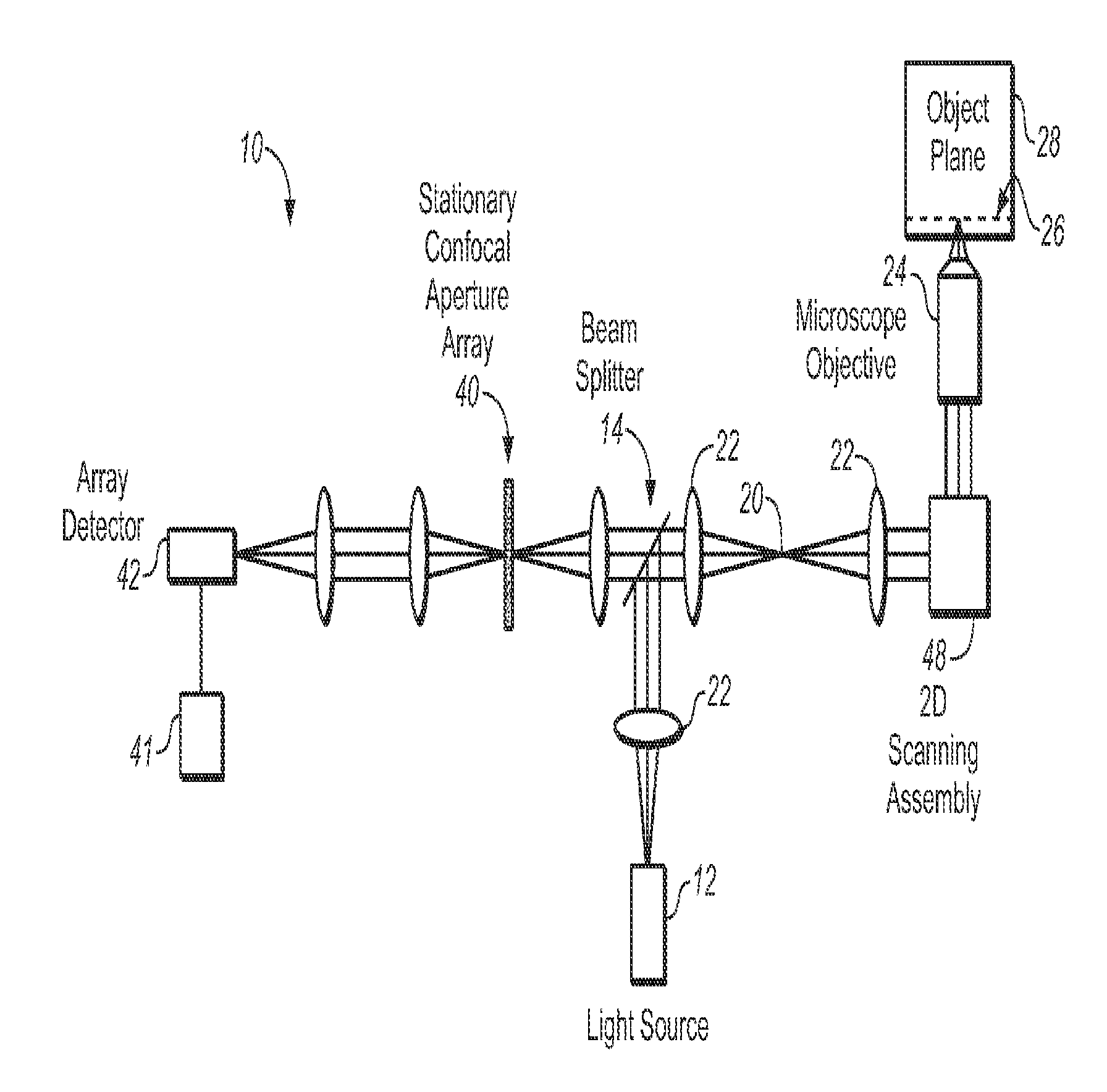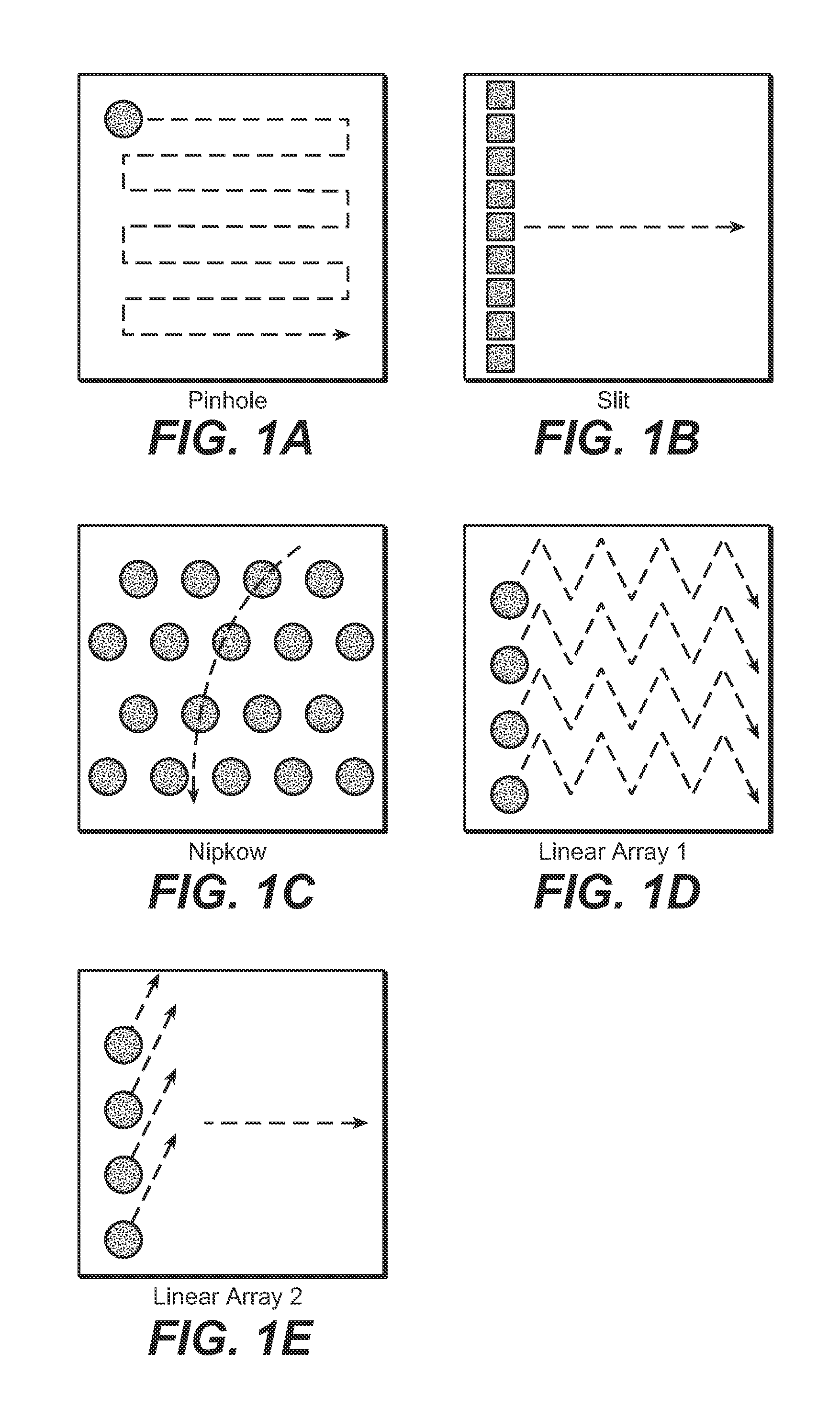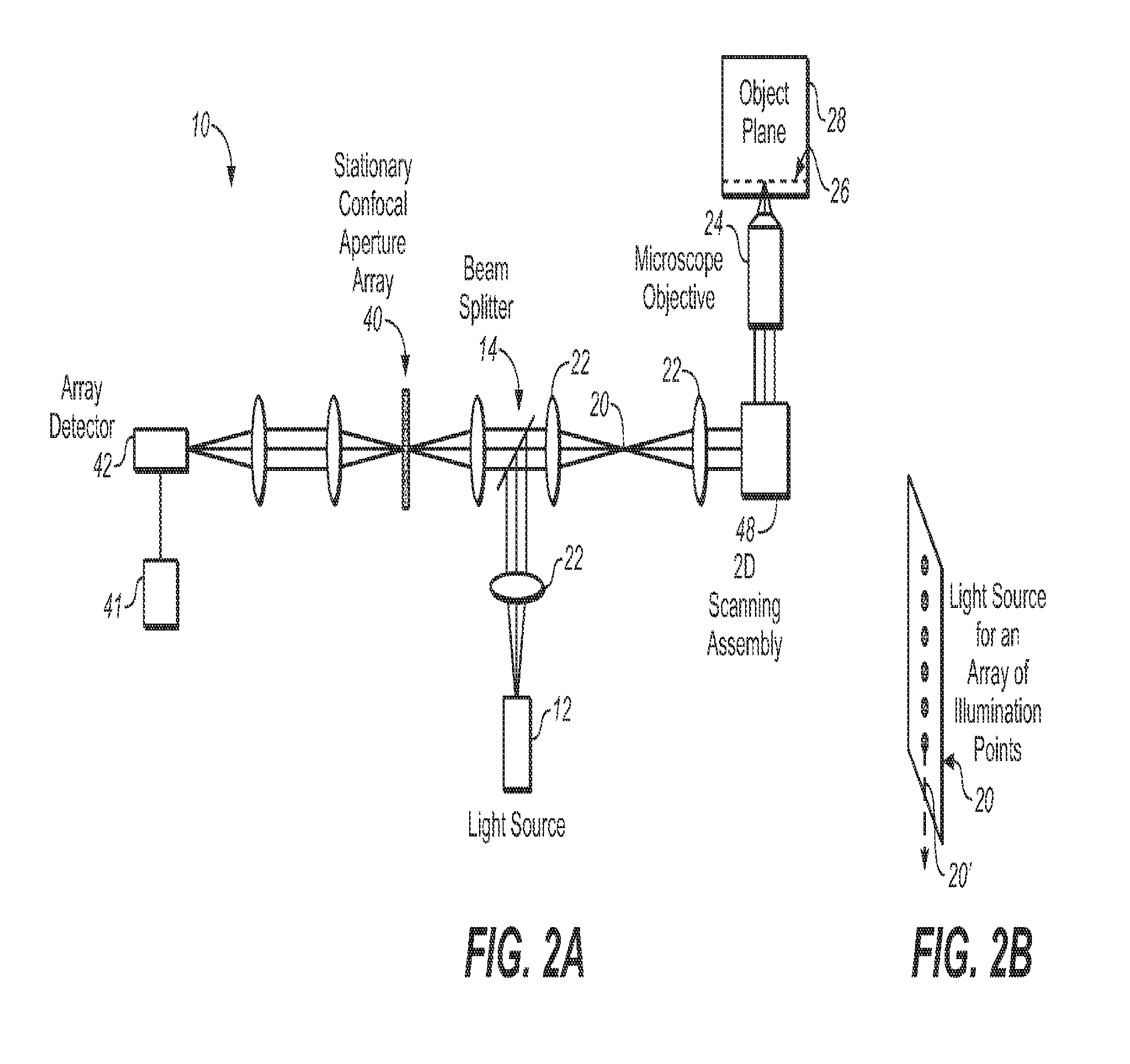Novel Multi-Point Scan Architecture
a scanning architecture and multi-point technology, applied in the field of optical scanning instruments, can solve the problems of limiting the practical imaging depth of in vivo imaging applications, performance degradation, etc., and achieve the effects of improving depth imaging, high frame rate, and rapid switching
- Summary
- Abstract
- Description
- Claims
- Application Information
AI Technical Summary
Benefits of technology
Problems solved by technology
Method used
Image
Examples
first embodiment
[0026]FIG. 2A is a schematic view of a multi-point scanning system employing a stationary confocal aperture array to illustrate the invention. The system 10 utilizes a light source 12 and a beamsplitter 14, to couple excitation light into the system. The light source 12 provides a substantially one dimensional array 20 of two or more illumination beams spread along a first dimension. In this application, the phrase “along a first dimension” means along a first line or direction, and the phrase “along a second dimension” means along a second line or direction.
[0027]The array 20 of illumination beams is shown schematically in FIG. 2B as an array of illumination points, where the first dimension is along line or direction 20′. The light source 12 may include a laser or lamp (not shown), a cylindrical lens (not shown), and a grating or pinhole aperture array (not shown) for generating a substantially one dimensional array 20 of two or more illumination beams spread along a first dimensi...
second embodiment
[0031]FIG. 3A is a schematic view of a multi-point scanning system 100 employing a moving confocal aperture array to illustrate the invention. The system 100 differs from system 10 of FIG. 2A in that the light source 112 generates a substantially one dimensional array 120 of two or more illumination beams spread along a first dimension 120′ shown in FIG. 3B, where the array 120 is scanned also substantially along the first dimension 120′. Hence instead of using a 2D scanning assembly as in system 10, a scan mirror 152 scanning in a second direction or dimension transverse to the dimension 120′ (such as about an axis that is perpendicular to the page) is adequate to accomplish the 2D image scanning in the manner illustrated in FIG. 1E. The generation of a scanning array of two or more illumination beams spread along a first dimension 120′ and also scanning along first dimension 120′ is described below in reference to FIGS. 5A-5D.
[0032]In FIG. 3A, the light from array 120 is conveyed ...
PUM
 Login to View More
Login to View More Abstract
Description
Claims
Application Information
 Login to View More
Login to View More - R&D
- Intellectual Property
- Life Sciences
- Materials
- Tech Scout
- Unparalleled Data Quality
- Higher Quality Content
- 60% Fewer Hallucinations
Browse by: Latest US Patents, China's latest patents, Technical Efficacy Thesaurus, Application Domain, Technology Topic, Popular Technical Reports.
© 2025 PatSnap. All rights reserved.Legal|Privacy policy|Modern Slavery Act Transparency Statement|Sitemap|About US| Contact US: help@patsnap.com



